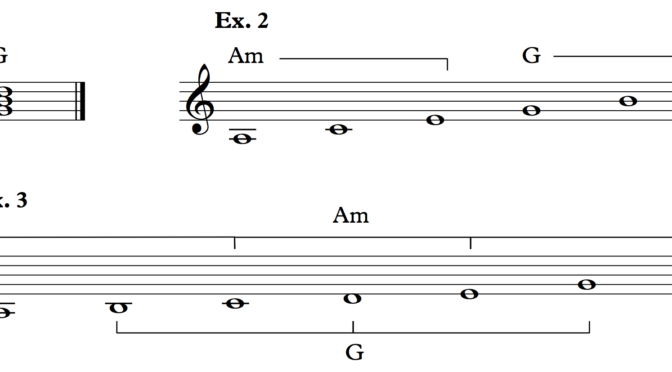Take two triads, any two triads. Preferably, two triads that don’t have any notes in common. When you arrange them so that they form a scale, that scale is a Bi Triadic Hexatonic Scale. As an example, let’s take A Minor and G Major.
First, in Example 1, I write the triads out as chords. Then, in Example 2, I write the notes out as arpeggios. Next, in Example 3, I arrange them in a way that combines them to form a scale with 6 tones, a “hexatonic” scale.
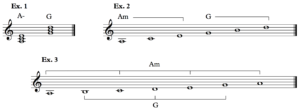
I especially like this one, because it’s a minor scale with no sixth degree, which makes it ultra useful, since you can use it in place of natural minor or Dorian.
Let’s try an A minor triad with a G minor triad. When combined into a scale, it yields a minor pentatonic scale with the addition of the b2. See examples 3 – 6.
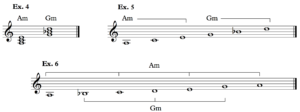
So far, these have been fairly “normal” sounding: kind of diatonic or modal, not really that exotic or “outside” sounding. Let’s try one that starts to move in the “outside” direction. Examples 7-9 take the A Minor triad and combine it with the Eb Major triad.
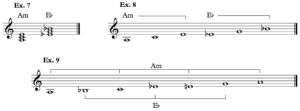
So far, we’ve just been building Minor Hexatonics, so let’s see what we get when we start with an A Major Triad.
In examples 10-12, we start by combining an A Major triad with a G# Minor triad. When it all shakes out, we get a pretty “inside” sounding ALMOST Lydian scale. In fact, it’s a Lydian scale without a 6th degree: 1 2 3 #4 5 7.
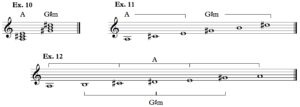
We can also combine triads to get another kind of altered dominant sound. In this case, let’s look at Examples 13-16, which use the A major and G minor triads. It becomes a kind of “Phyrigian Dominant” or “Mixolydian b9” without the 6th degree, so: 1 b2 3 4 5 b7.
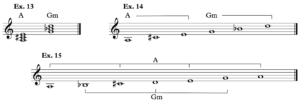
The triads from which we build these hexatonic scales don’t have to be limited to major or minor, we can also use augmented, diminished and sus4 triads.
In examples 14 – 16, we combine A Major and the G Augmented Triads. This particular combination yields a “Not Quite Lydian Dominant” scale. Or a Lydian Dominant without the 6th degree: 1 2 3 #4 5 b7.
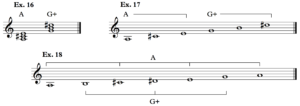
Now that you’ve got the gist, you can try building your own. Some to try: A major combined with G# Diminshed, Am combined with Bb Sus4, A major with C minor. Let me know through the comments what you come up with.
Have fun.

